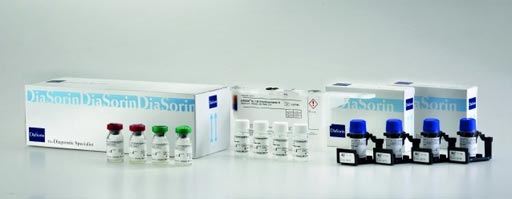Vitamin D Assays Compared and Harmonized
By LabMedica International staff writers
Posted on 06 Jun 2017
There are a variety of assay techniques available to measure of 25-hydroxyvitamin D (25(OH)D) concentrations and some have the ability to measure the two forms 25(OH)D2 and 25(OH)D3. However, there are significant discrepancies between procedures used to estimate vitamin D status.Posted on 06 Jun 2017
Vitamin D is a prohormone and is mostly obtained through skin synthesis from UVB exposure, and as such shows strong seasonal trends. Vitamin D can be obtained in two isoforms, and while UVB exposure-related synthesis will always lead to formation of cholecalciferol (D3), in diet or dietary supplements, vitamin D can also exist as egrocalciferol (D2).

Image: The complete extraction-free, fully automated Liaison XL 1,25 dihydroxyvitamin D radioimmunoassay kit (Photo courtesy of DiaSorin).
Scientists at the University of South Australia (Adelaide, Australia) and their international colleagues measured concentrations of 25(OH)D3 and 25(OH)D2 using liquid chromatography–tandem mass spectrometry (LC-MS/MS) in 5,915 participants (aged 31 years) of Northern Finland Birth Cohort 1966. Blood samples were assayed in batches over a course of 18 months. As anomalies were present in the measurements, 200 samples were reassayed using a radioimmunoassay.
Samples were prepared for analysis by thawing, mixing and re-centrifuging, to remove any fibrin debris. The integrated high performance liquid chromatography (HPLC) system used to separate the peaks of interest was the Acquity Ultra Performance Liquid Chromatography system. The radioimmunoassay Vitamin D kit was obtained from DiaSorin. To harmonize LC-MS/MS with Diasorin RIA measurements, formulae were derived from the limits of agreement (LoA).
The team found that concentrations of Vitamin D measured by LC-MS/MS were much higher than those measured by DiaSorin RIA, with a mean difference of 12.9 ng/mL. Constant variation was evident between batch measurements after log transformation. Statistical formula was applied separately for each batch of LC-MS/MS measurements, enabling the scientists to remove both the constant and proportional bias that was evident prior to the transformation.
The authors concluded that despite the introduction of schemes and or programs to improve accuracy of assays to measure 25(OH)D, significant differences can still happen. In these instances, methods to harmonize measurements based on a relatively small number of replicates can be successfully applied to establish confidence and to enable between-study comparisons. However, despite achieving better agreement between the methods by the statistical harmonization of 25(OH)D concentrations, any use of these data for developing population health guidelines should be done with caution. The study was published on May 17, 2017, in the Journal of Clinical Laboratory Analysis.
Related Links
University of South Australia













